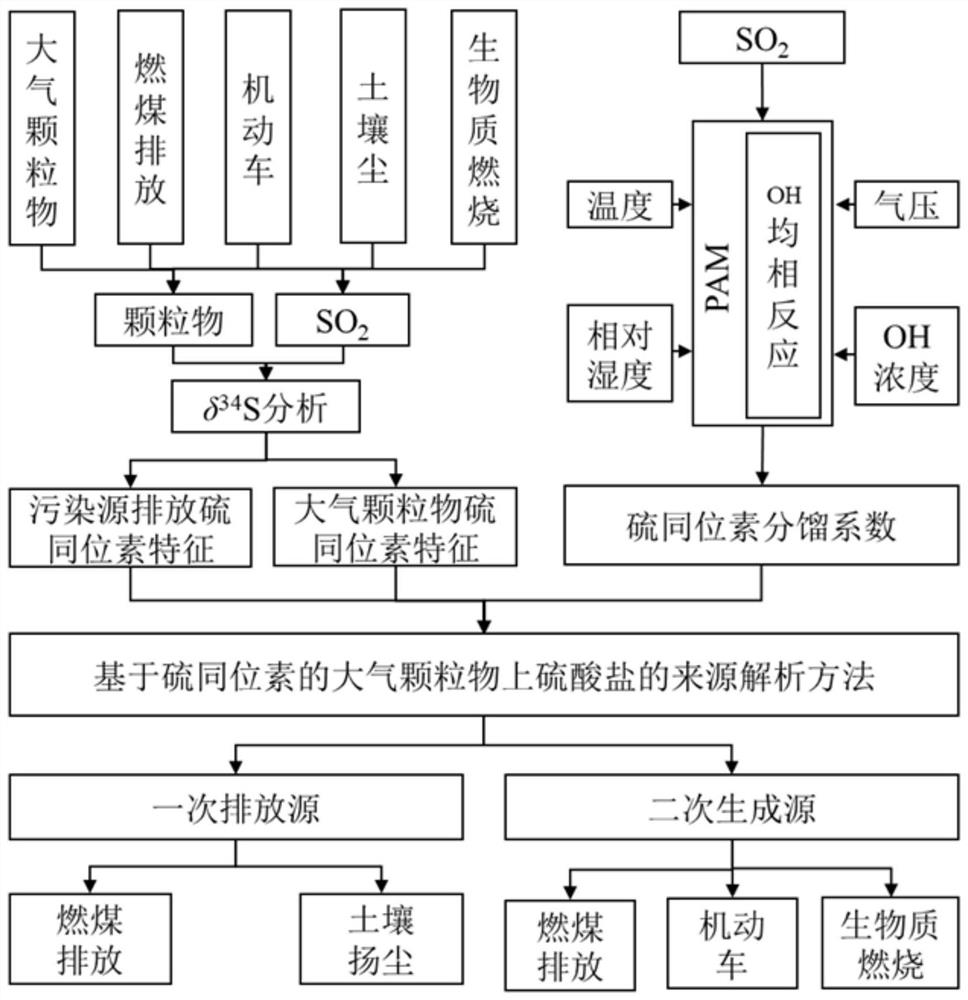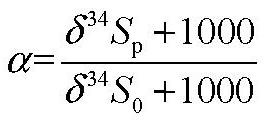A method for analyzing the source of sulfate in atmospheric particulate matter based on sulfur isotope
An atmospheric particulate matter and sulfur isotope technology, which is applied in the fields of material analysis, chemical process analysis/design, material analysis by electromagnetic means, etc., can solve problems such as inaccurate analysis results
- Summary
- Abstract
- Description
- Claims
- Application Information
AI Technical Summary
Problems solved by technology
Method used
Image
Examples
Embodiment Construction
[0024] The present invention will be described in further detail below in conjunction with the accompanying drawings.
[0025] figure 1 Be the process roadmap of the inventive method, the pollution source emission SO that collects by research 2 and particulate sulfate, combined with SO 2 The characteristics of sulfur isotope fractionation in the conversion process, the establishment of the sulfur isotope mass balance equation in atmospheric particulate matter, and the analysis of the contribution of each pollution source to sulfate in the atmosphere.
[0026] The specific technical problem to be solved by the present invention is: 2 and the study of sulfur isotopes in particulate sulfate, combined with SO 2 The characteristics of sulfur isotope fractionation in the conversion process, the establishment of the sulfur isotope mass balance equation in atmospheric particulate matter, and the analysis of the contribution of each pollution source to sulfate in the atmosphere. Th...
PUM
 Login to View More
Login to View More Abstract
Description
Claims
Application Information
 Login to View More
Login to View More - R&D
- Intellectual Property
- Life Sciences
- Materials
- Tech Scout
- Unparalleled Data Quality
- Higher Quality Content
- 60% Fewer Hallucinations
Browse by: Latest US Patents, China's latest patents, Technical Efficacy Thesaurus, Application Domain, Technology Topic, Popular Technical Reports.
© 2025 PatSnap. All rights reserved.Legal|Privacy policy|Modern Slavery Act Transparency Statement|Sitemap|About US| Contact US: help@patsnap.com


